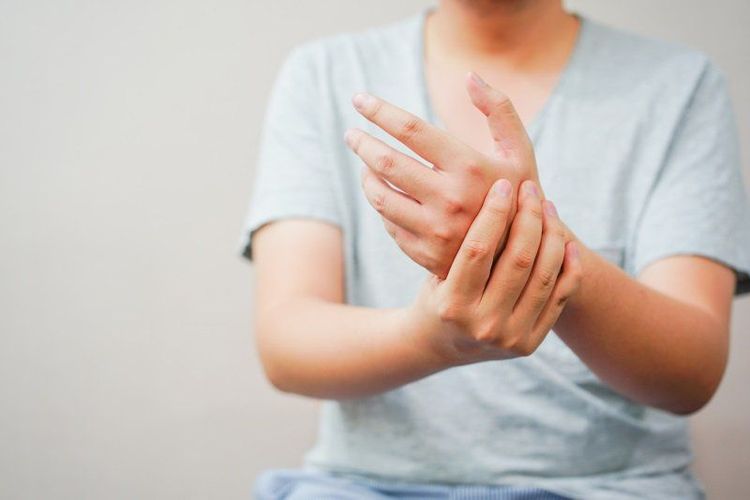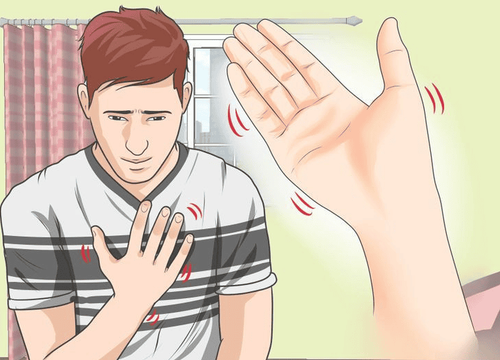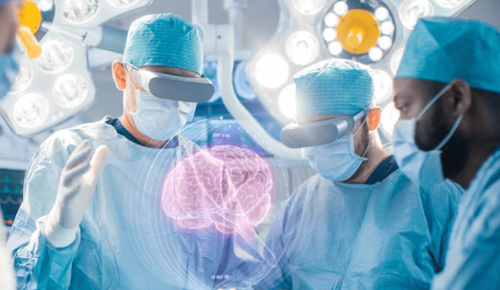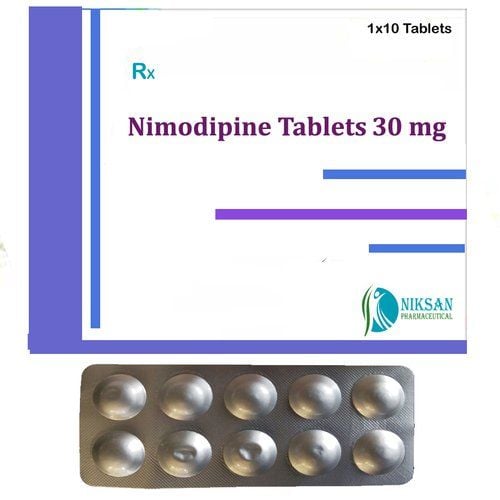This is an automatically translated article.
The article was written by MSc Vu Duy Dung - Doctor of Neurology, Department of General Internal Medicine - Vinmec Times City International Hospital.History and physical examination are used first to determine whether the primary tremor is a movement tremor (ie, postural, kinesthetic, or voluntary tremor) or a resting tremor. Indeed, that is the main difference: diseases in which tremors are predominant with movement, and those in which tremors at rest are predominant, each of which will be presented in turn, starting with the second. because it is more diverse and encountered more often. This section discusses the most common conditions and diseases with distinct clinical features.
1. Essential tremor (essential tremor)
The main clinical feature of essential tremor is tremor. This is commonly observed in many activities of daily living, from eating to writing, and can be induced on neurologic examination with multiple maneuvers (eg, finger-nose-finger, helix drawing. , pour water between two cups).Runs are usually milder asymmetrical rather than fully symmetric, affecting one hand more than the other. In about 5% of patients, tremors are markedly asymmetrical or unilateral. In about 50% of patients with essential tremor, tremor has an intentional component, which worsens as the patient approaches the target in the finger-nose-finger test.
Interestingly, the intentional tremor in essential tremor is not limited to the hands; In fact, 10% of patients exhibit such tremors in the neck as the head approaches the target. This can be observed when the patient lowers the head, for example, near a cup or spoon. In addition to the tremor, patients with essential tremor often have postural tremor (that is, tremor that occurs when the body part is held still against gravity), although the amplitude of this tremor is usually lower than that of the tremor. Tremor in the arms is often out of phase, causing a wobbly appearance when the hands are held in a flapping position. Out-of-phase explains the observation that function can improve when two hands rather than one are used to hold a cup or a cup because tremors in one hand compensate for tremors in the other. something.
Postural tremor of essential tremor is usually greatest in amplitude at the wrist joint and is more often associated with wrist flexion than pronation, although this is not present in all cases. Resting tremor, without other major features of Parkinson's syndrome, such as bradykinesia or rigidity, occurs in 1% to 35% of patients with essential tremor, depending on the method of case definition, but is contrary to the clinical picture. Parkinson's disease (PD), which is a late symptom and is found only in the hands (ie, not in the legs).
The motor symptoms of essential tremor are not limited to tremors. Another motor symptom of essential tremor is gait ataxia, which can be seen when the patient is asked to walk so that the feet are in a straight line. The number of missed steps in illiteracy tremor was greater than in the control group of the same age.

In most patients with essential tremor, tremor worsens over time, and some pattern of progression has been described; the two most common patterns are late-onset (after age 60) with steady progression of aggravation and early-onset (before age 40) with mild tremors that persist for many years which then, at age 60 and beyond, steadily worsening (Case 4-1). The least common pattern is early onset with marked worsening over the next decade. There have been several prospective, long-term natural history studies of essential tremor; however, the best estimates are that the mean annual increase in tremor severity from baseline is 3.1% to 5.3%, and the median annual increase from baseline is 1.8% to 2.0%.
|
Ca bệnh 4-1 Nữ 68 tuổi biểu hiện run mà bệnh nhân thấy khi cầm đồ để ăn và khi viết. Run bắt đầu khoảng 5 năm trước, và nó dường như nặng hơn, từng ít một, theo năm tháng. Bố bệnh nhân và một trong hai người chị em gái của bệnh nhân có run tương tự. Mặc dù bệnh nhân không biết, nhưng một trong các con của bệnh nhân nói rằng thỉnh thoảng nhìn thấy bệnh nhân run đầu nghiêng bên này bên kia mức độ nhẹ. Bệnh nhân trước đó đã được điều trị với propranolol nhưng không dung nạp liều trên 80 mg/ngày vì nhịp tim giảm xuống dưới 60 lần/phút. Hơn nữa, liều này chỉ làm giảm run nhẹ (nghĩa là 10%). Bệnh nhân cũng đã uống pirimidone, 50 mg vào buổi sáng, nhưng liều khởi đầu đã làm bệnh nhân buồn nôn, và bệnh nhân không uống lại nữa. Khám thấy run khi bệnh nhân vẽ những đường xoắn ốc và thực hiện nghiệm pháp ngón tay-mũi-ngón tay, và nó nặng lên một chút khi bệnh nhân chỉ lại gần mũi trong nghiệm pháp này. Bệnh nhân cũng có run tư thế, nhưng nó nhẹ hơn đáng kể so với run khi bệnh nhân viết. Bệnh nhân được điều trị khởi đầu với topiramate 25 mg/ngày và tăng dần lên tới 200 mg/ngày, làm giảm biên độ run của bệnh nhân ở mức độ trung bình. Bình luận Ca bệnh này minh họa tiến triển chậm và thường lành tính của run vô căn, thực tế là triệu chứng lâm sàng chính để xác định run vô căn là run động học, và sự có mặt của run đầu ở một số bệnh nhân run vô căn, đặc biệt là phụ nữ. |
Neck tremor in essential tremor usually begins in one direction, “no-no” (ie, horizontally) or “yes-yes” (meaning vertically); Over time, tremors can progress to more complex, multi-directional tremors. Unless very severe, neck tremors, a type of postural tremor, resolve when the patient is supine with the head at rest.
An interesting feature of neck tremors is that patients with essential tremor are often unaware that they have neck tremors (that is, they are unaware of it), especially when the tremor is mild. Jaw tremor is more common when the patient opens their mouth rather than closes it; Mouth tremor when closed is a more common feature of the tremor in Parkinson's disease.
The presence of postural dystonia in cases of essential tremor is controversial, although it is possible that a mild dystonia in some cases would not rule out the diagnosis of tremor. idiopathic, particularly when postural dystonia is a late sign in patients with essential tremor who have severe and persistent tremor.
Misuse of the diagnosis of essential tremor is common. Indeed, studies show that 30% to 50% of "essential tremors" have a diagnosis other than essential tremor, with many of these patients having Parkinson's disease or dystonia. Can be distinguished from Parkinson's disease by the absence of essential tremor signs of muscle stiffness, masked facial features, and bradykinesia with diminished amplitude (ie, patients with essential tremor have no gradually in amplitude in the finger-smash test). The features of tremor are also important in differentiating a patient with essential tremor from a patient with Parkinson's.
Presence of tremor at rest, orthostatic tremor (ie, postural tremor with minimal vibration), postural tremor predominates at the knuckles of the fingers rather than the wrist, or postural tremor Characterized by a greater amplitude of wrist rotation than wrist flexion and extension are more likely to diagnose Parkinson's disease than essential tremor.
Recurrent tremor is a pattern of postural tremor that begins after a brief latency of a few seconds and is another characteristic feature of Parkinson's disease. Use of dopamine transporter (DAT) imaging may be useful in distinguishing patients with essential tremor from those with Parkinson's, although its use is only adjunct to clinical information obtained from the history and examination.
In addition to a mild dystonia posture described above, dystonic postures, dystonic movements, or dystonia are not features of essential tremor.
In addition, dystonic tremor is usually neither rhythmic nor oscillating. Patients should be evaluated for the presence of cervical dystonia, which is characterized by head tilt or rotation, hypertrophy of the sternocleidomastoid or other muscles of the neck, the presence of a disabling point. tremor, or a sensory tip from history (that is, a maneuver such as touching the chin or the back of the head will reduce tremors).

Hyperthyroidism can be identified by clinical history (eg, symptoms of weight loss or heat intolerance) as well as possible drug use (eg, lithium, prednisone, valproate) or other substances (eg, tobacco, caffeine) that can cause or worsen tremors with movement.
A difficult distinction is made between mild essential tremor and enhanced physiological tremor, although the presence of neck tremor would rule out the latter. Computerized tremor analysis with inertial loads can assist with this distinction, although this is usually not possible outside of specialized centers.
In patients with a central tremor (eg, essential tremor), the baseline tremor frequency will not change with inertial load; In patients with increased physiological tremor, the frequency is reduced.
Other features supporting the diagnosis of essential tremor are the presence of essential tremor in one or more first-degree relatives. Tremor has been reported with ethanol use and this feature is often used as a diagnostic tool; however, it is not very specific and is of little use. Indeed, patients with most tremor disorders experience a decrease in tremor following ethanol administration.
The main motivation for the treatment of essential tremor is clumsiness and functional disability. Beta-blockers (especially propranolol) and primidone, alone or in combination, are the most effective agents, although many patients choose to discontinue these agents because of their limited effectiveness and side effects.
Propranolol has been used in doses up to 360 mg/day, although doses greater than 80 mg/day to 100 mg/day are rarely tolerated in elderly patients, with the main problem being bradycardia. A conservative starting dose is 20 mg/day, and this dose is increased gradually as noted above.
Asthma is the only relative contraindication to the use of propranolol, and use of propranolol should be considered on a case-by-case basis. Primidone may be prescribed at doses up to 1500 mg/day, although lower doses (eg, starting with 25 mg and gradually increasing to 500 mg/day) are usually effective. Nausea and acute unsteadiness of walking were observed in approximately 25% of patients, regardless of the starting dose, and in the authors' experience, pre-administration of phenobarbital (ie, 30 mg twice/day). days for 3 days) is one way to avoid this unwanted side effect. Propranolol and primidone can provide mild to moderate reduction in tremor amplitude in 30% to 70% of patients with essential tremor. If the tremor is mild, it can be suppressed.

Deep brain stimulation (DBS) surgery (median ventral nucleus of the thalamus) and gamma knife surgery (thalamus) clearly reduce tremor severity in patients with drug-resistant severe tremor, with tremor reduction in the upper extremities often greater amplitude than drug use.
More recently, thalamus (mid abdominal nucleus) focused ultrasound has demonstrated similar efficacy, although the long-term benefit is not fully known. These surgeries are usually reserved for patients who do not respond appropriately to appropriate drug therapies.
Vinmec International General Hospital is one of the hospitals that not only ensures professional quality with a team of leading medical doctors, modern equipment and technology, but also stands out for its examination and consultation services. comprehensive and professional medical consultation and treatment; civilized, polite, safe and sterile medical examination and treatment space. Customers when choosing to perform tests here can be completely assured of the accuracy of test results.
Please dial HOTLINE for more information or register for an appointment HERE. Download MyVinmec app to make appointments faster and to manage your bookings easily.
Articles source reference:
Louis ED. Tremor. Continuum (Minneap Minn) 2019;25(4, Movement Disorders): 959–975.














